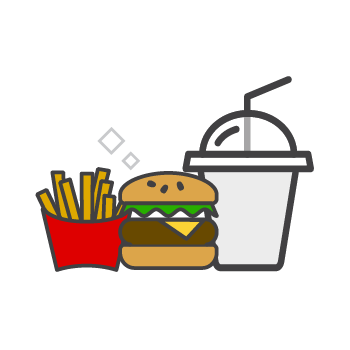Beautiful and Delicate. Learn About Glass Art with MoltenWolf Glass’ Valerie & Jeff Wolf
by Lou-Ann Jordan Apr 19, 2022
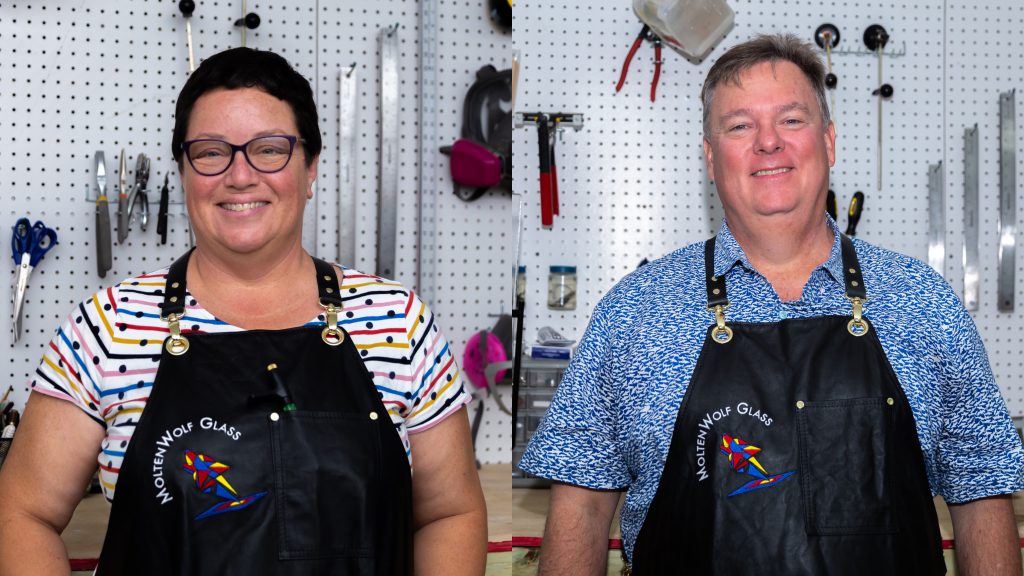
Glass is a contradiction. It is hard and unyielding, yet it is also fragile and pliable under the right conditions. All of these qualities add to its suitability as a medium in art.
In glass art, its hardness means it can withstand heat, yet its malleability causes it to conform to the artist’s designs. When the artist is finished, these dichotomous qualities converge into something beautiful and delicate that can stand the test of time with the proper care.
In the Caribbean, glass art is a discipline that continues to grow in popularity. However, in Bonaire, we have enjoyed engaging in this media through various channels. A notable source has been the artistic contributions of Valerie and Jeff Wolf and the crew at MoltenWolf Glass.
As glass art workshops continue to pop up and people clamour to get involved with this type of art, Yello wanted to explore the form, techniques, and various off-shoots. Therefore, we reached out to the creative duo, Valerie and Jeff Wolf. Experts in glass art, Valerie and Jeff have been working with glass for the past 15 years.
Read on as the couple share about the various types of glass art, their journey in the craft and their work at MoltenWolf Glass.
Please share a bit about what drew you to Bonaire.
We came to Bonaire originally in 1995 during our honeymoon for scuba diving. We kept coming back almost every other year for the diving and the relaxing climate. What drew us to Bonaire was all its positive attributes. They were in line with how we wanted to live our lives. The diving, the ability to participate in several water activities, a smaller population, and a healthier way of life all helped to make the decision to retire here easy.
When did you first become interested in art?
We have always had some artistic pursuit, such as Jeff’s still life and underwater photography. However, we both got into glass about 15 years ago. We both tried lampwork beading and blown glass, but we enjoyed fused glass for the long term as we could both be artistic in our unique way with the same medium.
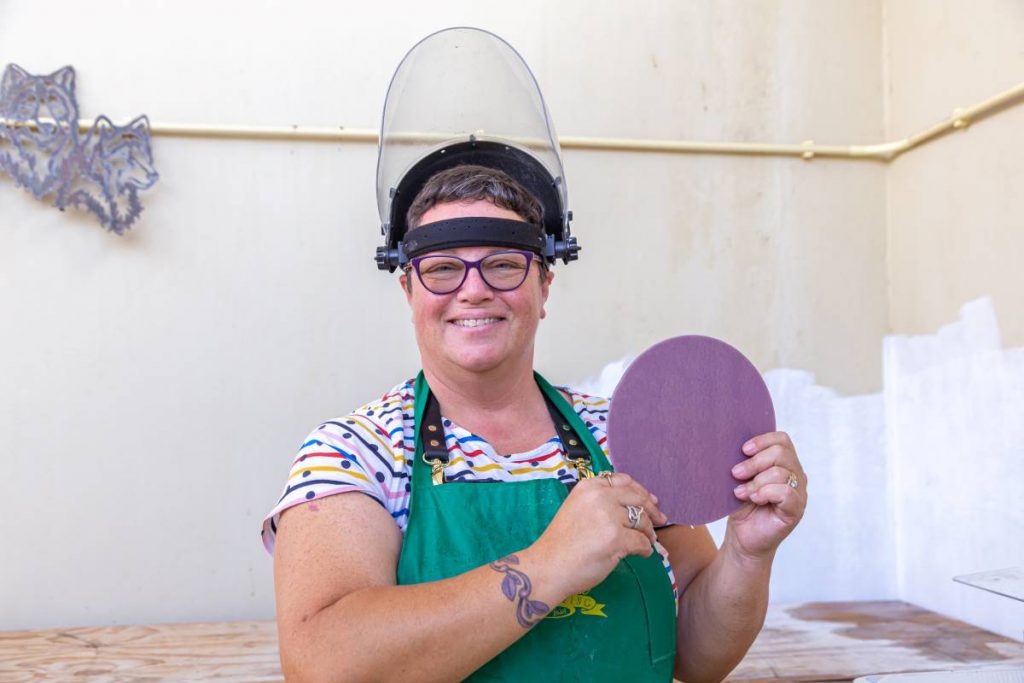
Were you always interested in glass art, or did you transition from another media?
Jeff has always been a photographer and underwater photographer, and Valerie is more of a crafter with interests in needlework, papercrafts, stringing beads, etc.
Valerie and I started our glass journey in Phoenix, Arizona, around 2008. At the time, Valerie was expressing her artistic flair by making bead jewellery and decided to learn how to create the beads for her jewellery rather than buy them. The Mesa Arts Center (Mesa, Arizona) offered a flameworking glass bead-making class, and when Valerie informed me that she would take this class, I said, “I will join you; after all, it would be fun to work with fire and Molten Glass!”
While we were taking the class in flameworking, we saw a class next to us doing glass fusing, and we took the beginner Glass Fusing Class next. We have travelled to many glass artists and taken many glass techniques, styles, and design courses over the years. They’ve taught us many different ways that glass can be manipulated. Over the next 10 years, we grew our skills and developed our unique style of creating glass art under the name of MoltenWolf Glass.
In 2019, we moved to Bonaire. Initially, we were planning on just creating our studio on the island for our artistic pleasure and artistic outlet. However, after moving to Bonaire, we noticed that there is not as big a collaborative artistic community as we were used to in the US. Over the last two years, we decided that we wanted to share our art and love of glass with Bonaire and its visitors. We want to create a more open and sharing artistic community and help develop more local creative talent into the extraordinary world of glass.
Our concept for MoltenWolf Glass is to showcase not just our glass art but to invite other local glass artists to be part of this great adventure. We hire local artists to help them express themselves in glass and teach them the skills to make great art. We just want to show Bonaire and its visitors the beauty of glass in all ways that it can be expressed. We hope you all come by and enjoy what we have created.
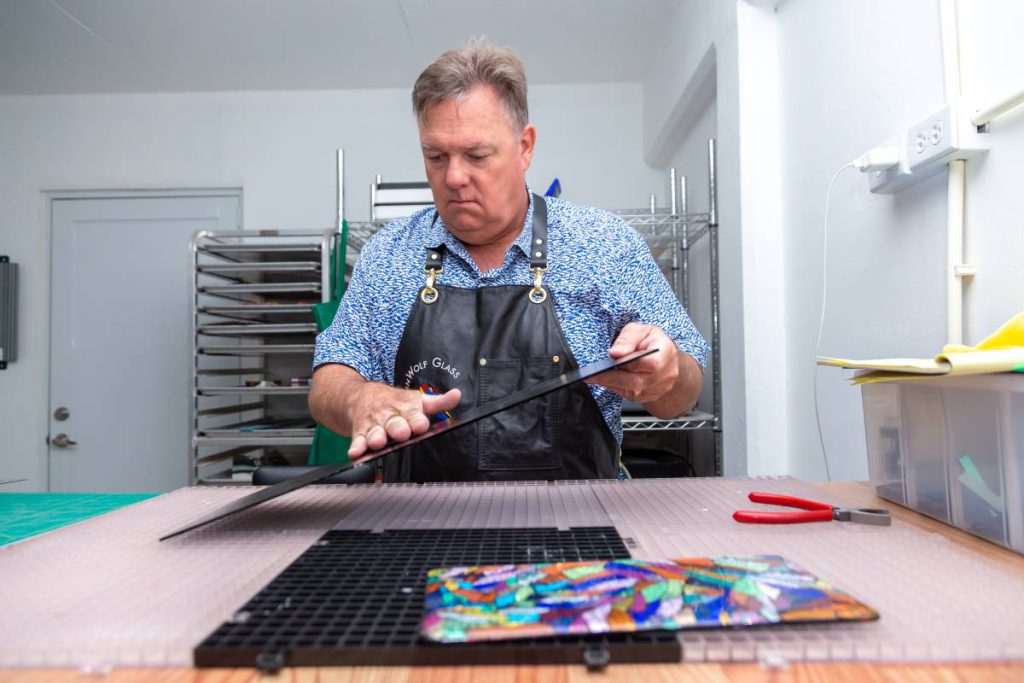
For the novice, please explain what is glass art?
Glass is a fantastic medium to work with, especially as it’s very malleable (using heat) and very forgiving. Glass can be reheated multiple times and re-used. Glass has terrific depth and can be used effectively to present wonderful imagery. There are four main types of glass art styles:
Stained Glass: This is where the artist cuts glass to specific shapes and uses silver foil to combine the glass into an image. Stained glass is usually used for windows or sun catchers.
Glass Blowing: It is the most well-known glass art style, takes a lot of practice, and is a team activity. It usually starts with a round shape and works from there.
Glass Flamework: This is where the artist uses a single torch flame and actively melts glass from various colour rods to create beads, jewellery and small figurines.
Glass Fusing: The artist starts with flat sheet glass, rods, and crushed glass. Pieces are cut for desired shapes, and then heat is used to melt the glass together and manipulate it in “ovens” called kilns.
Of the types described, which discipline of glass art do you do?
Glass fusing, which is what we do, is working with glass sheets, stingers, rods, frit, and glass enamel paints to design and create glass projects. The glass fuser usually plans the project on paper and then cuts the sheets of glass to the colours and shapes they want. Glass fusers generally start with large sheets of coloured glass. Each sheet is approximately 24 by 48 inches (60 by 120 cm). Once the glass, rods, frits etc., have been cut and placed in the desired design, these pieces of glass are then placed into the kiln and heated to 1500°F (815°C) to combine into one piece of glass. After this process, the artist may have to grind or cut the piece to get the exact shape or look that they are trying to achieve. Then the glass fuser reheats the glass in the kiln and manipulates it into the desired shape (draping over a mould, slumping into forms that the artist designs out of ceramics).
Your designs boast vibrant colour combinations. How do you add colour to the glass?
Yes, we have many vibrant colour combinations. The art glass comes in various colours in both opaque and transparent versions. The dichroic glass has coatings that allow for different sparkling effects. Also, the glass can be manipulated in many ways with fusing techniques to create colour combinations. We can cut pieces and place them together to create colourful designs. We can also do various melting techniques where the glass is melted to combine colours in fluid patterns. Additionally, we can mix colours using frits (different sizes of crushed glass).
Do the different types of glass art require specific kinds of glass? Please explain.
Each artist chooses the type of glass they like to work with; stiff, opaque, transparent, thin or thick glass etc. However, all glass artists (except stained glass) must use only one Coefficient Of Expansion (COE) of glass. COE is the rate at which the glass expands and contracts as it heats up or cools down. If an artist combines two pieces of glass that are different COEs, the glass project will most likely crack or shatter due to the stress of the two COEs “moving” at different speeds when they are fused together. It is important to note that glass heated too hot or too many times can “shift” its COE, so it is important to only heat the glass for what you need and go slower each additional time you heat the glass.
Once an artist chooses the COE that they prefer to work in, there are multiple manufacturers of glass that make glass for the artists in many colours that all have the same COE. We use COE 90 from Bullseye Glass. This manufacturer has over 50 different opaque and transparent glass colours, rods and frit (crushed glass) guaranteed to remain 90 COE through at least five firings. We use dichroic glass Coatings By Sandburg when doing ceramic and metal moulds for slumping and draping.
Are aspects of the Caribbean, specifically Bonaire, reflected in your art? If yes, in what way?
We make a lot of colourful displays and functional items that represent the ocean, such as mosaic ocean waves, sea turtles, sea horses, octopus, flamingos, other local birds, and many fish. We use many bright colours in our dishes and functional items representing Bonaire, the Caribbean, and island living. Also, we use both art and dichroic glass in a mosaic form to make jewellery. This technique allows every piece to be vibrant and unique, representing the island, and the wider Caribbean, as fun and fashionable island style.
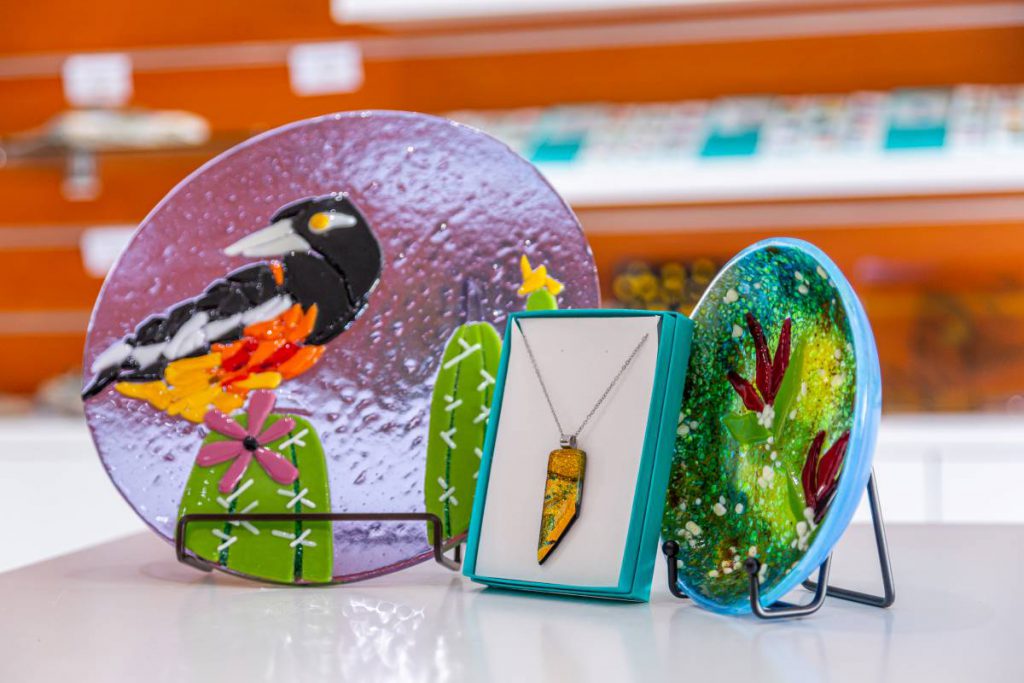
Full-fused, contour fused, mosaic fused flow bars, polt melts, and screen melts are noted as some of your favourite styles. Please tell us a bit about these various styles.
Full Fuse (1475°F, 802°C) requires glass to be melted into a single sheet with a smooth surface. This style is used primarily for functional items like plates and bowls, but we also use this firing to create components that we use later in projects.
Contour Fuse (1415°F, 768°C) is where the glass is heated enough to stick together. The edges are softened, but the shape of the individual pieces that make up the project is not lost. We use this style of firing to create a lot of our wildlife because it produces the illusion of depth and dimension. We can also make design components in this style that would be added to other projects and full fused later.
For Flow Bars (1600°F, 871°C), the glass is heated to the point that it is almost “jello” soft. When this is done, it can be manipulated in several ways, like “flowing” it down an incline into a “mould”. Doing so allows the glass to mix and flow organically. Another technique used is to set up a mould to hold the glass, and place it in a pattern that leaves air pockets. The glass will eventually flow into the pockets, settle down and have a more consistent design.
Pot Melts (1800°F, 982°C) is where the glass is heated to the point of something akin to “warm yoghurt”. At the start, the glass is in a “pot” that has one or more holes in the bottom. When heated, it flows through the holes into a mould that holds it in the correct shape. Pot Melts usually produce patterns of concentric rings of colours in the order that the glass came out of the “pot”. Usually, pot melts are parts that we use in other projects, but they can be made into plates, platters or bowls.
Screen Melts (1800°F, 982°C) require the glass set up on a stainless steel screen and heated to the “warm yoghurt” consistency. The glass melts through the screen, drop-by-drop creating wonderful organic patterns. As with the others, screen melts are usually parts we use in other projects, but like pot melts, they can be made into plates, platters, and bowls.
Glass blowing, flameworking, and stained glass are three types of glass art. What is unique about each?
Most people are familiar with glass blowing. A large kiln houses the glass stock that the glassblower “pulls” their starting glass “blob” from using the glass blowing rods. The glass must be maintained above 1300°F (700° C) throughout the process. That means that the artist must continually move between heating the glass in a special kiln called a “glory hole” and their work area where they shape it. Also, the artist must constantly rotate the glass because at 1300° F, it is soft, and gravity makes it droop towards the ground. As a result, glass blowing must always be completed in a single session by the artist. Blown glass usually comes in the form of a circle due to the constant turning of the glass to keep it from falling on the ground. Therefore, most artists make vases, glasses, plates, etc. There are techniques to create more intricate shapes, but those involve combining the glass blowing with the flameworking and fusing disciplines.
On the other hand, flameworking is working with an open flame at around 1500° F (815° C). The flame workers use a torch connected to several types of gas to produce a small hot flame that looks a little like a blow torch. The flamework artist then uses coloured glass rods and heats them until the glass is soft and sticky. The artist can then use several techniques to combine the different coloured pieces of glass, shaping them into a single project. Flamework artists typically make beads for jewellery, and small figurines, but they can combine the skills of glass blowing to create some unique art.
Lastly, stained glass is the process of cutting glass (usually transparent) into the shapes that will eventually make up a picture. Stained glass artists start with a drawing or design they want to create and then cut the glass pieces to the correct shape and size for each part of the picture or design. The glass is then “framed in” using foil. The result is a picture or design used as windows, sun catchers, lampshades, etc. Sometimes stained-glass artists will utilise glass created by fusers and enamel paints in their work.
Do you see any recurring themes surfacing in your work? If yes, what is it?
With each piece, our goal is to use colour to tell a story of the island. We try to use many different techniques so that we’re not always returning to the same projects or looks repeatedly. There will always be some turtles, sea horses, and flamingos in our art, but we try to create new looks each time we do a new project.
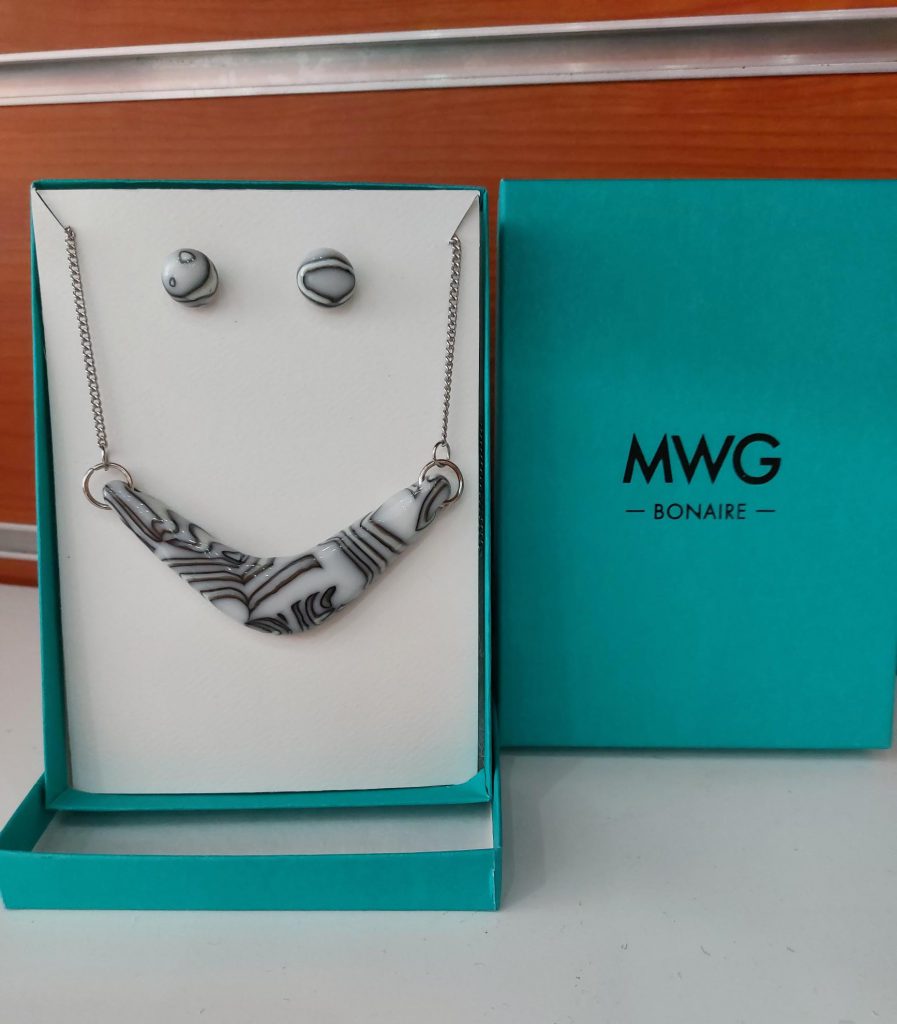
You design jewellery, home décor and functional art pieces, all very distinct. From where do you draw inspiration?
There are many, many techniques in fused glass; there is inspiration from learning each technique. Valerie gets much of her inspiration from exposing herself as much as possible to other artists from various mediums via museums, galleries, and online sources. Just living on Bonaire offers inspiration, whether it’s the ocean, nature walks, interacting with people, and seeing how colours are interpreted in street murals or by other local artists. It’s all educational.
What recent projects have you found most fulfilling, and why?
Jeff’s most recent project was to create a unique jewellery item using only two types of glass. He chose french vanilla (a cream colour) and white. The french vanilla (FV) glass is made using sulfur, whereas the white is made using copper. When the two types of glass touch and are heated up, a chemical reaction creates a grey/black “halo” effect. So, using just two pieces of glass, Jeff created a pendant that has four colours. It was such a fun process!
He made a stack of alternating layers of FV and white (10 layers) totalling 1.5” or 21mm. Then, he melted them in the kiln until they were only ¼” or 6mm thick, and from this came a flat piece of glass with thin lines of alternating cream, grey, black and white. He then took the piece of glass and smashed it with a hammer! The shards had all these stripes. The fragments were then placed in a mould on the edge to show all the lines. Next, he “melted” the glass at 1800°F, 982°C, so that these pieces would flow into each other, distorting the straight lines into interesting curves and swirls. Once the new piece of glass cooled, he cut the shape of the pendant using a glass saw. He then drilled the hole for the chain and contour fused the piece to remove the sharp edges.
When working with glass there is a lot of scrap leftover from other projects. Lately, Valerie has been working with using scraps of glass in her projects. She likes working in limited, defined areas, such as the confines of a slump mould, as she finds it brings out creativity. Recently, she’s been working with oil and vinegar bottles and using a 6” x 1 ½” space to decorate the bottle with opaque glass and dichroic decorations. She also incorporates various transparent blues and greens to create a variegated ocean look.
Do you provide classes in any of the glass art disciplines?
At this time, we do not offer classes. We conduct a monthly presentation called Meet The Artist, where the artist talks about how they created a project or how a technique is done. We anticipate offering classes in 2023.
What is one thing that always surprises people when they begin learning to work with glass?
It takes practice, but once you learn how to do the techniques, it is pretty easy to do and a very creative way to express oneself.
_____
We hope you’ve enjoyed learning about glass art with Valerie and Jeff. To view their breathtaking products, visit them online at www.MoltenWolfGlass.com and also on Facebook and Instagram.



